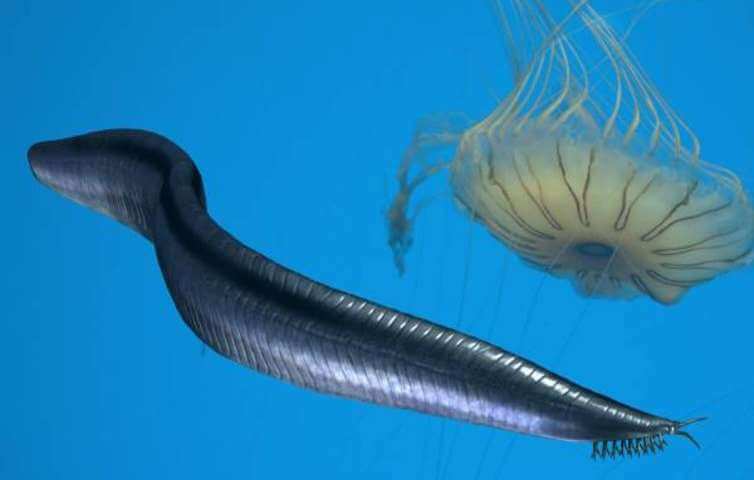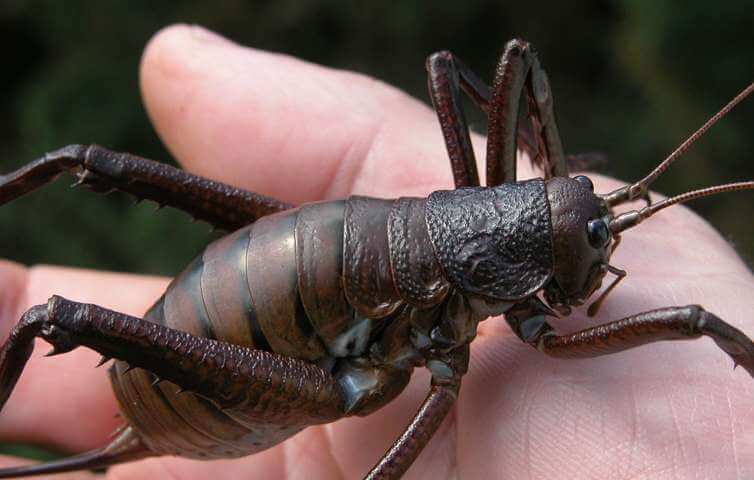- Get link
- X
- Other Apps

Children, directors and scientists discussed what aliens might look like for decades. If they really exist, what will they be? Like us? Or similar to our worst nightmares? The answer to this question depends on how evolution works at the deepest level. Hollywood has been regaling us for years with his images of extraterrestrial races, and most of them were humanoid. At first it was necessary, because the special effects required that someone get into a rubber suit. Now, when everything is done with the help of computer graphics (CGI), aliens are like people only in those cases when you need to establish an emotional connection with them, to penetrate to them - like in “Avatar” by James Cameron.
Currently, the only forms of life that we can study live on Earth. 3.5 billion years ago, they had one origin, and this common ancestor spawned no less than 20 million living species. They all have bodies organized according to about 30 different body plans in the main groups called fila.
But when, about 542 million years ago, animals first diversified during the Cambrian explosion, there could be an even greater variety of fundamental plans for the body. Look at the five-eyed armored Opabina in the image above or at the stalked and almost flowering Dinomichus next to our own distant relative, the chord Pikaia.

Restart film life
In the famous thought experiment, biologists Stephen Jay Gould asks the question: what could have happened if we had the opportunity to rewind the "film of life" and start it again? Gould insisted on the importance of randomness in evolution: change one little thing at an early stage - and over time, the consequences will become more pronounced. In the version of the story we know, Pikaia or something similar to it survived and eventually led to the appearance of fish, amphibians, reptiles, mammals and in the counting of ourselves. But what would happen if she died? Could another group lead to the emergence of intelligent beings, for example, with five eyes? And now you would blink alternately two, then three? If our own origins on Earth really depended on such thin loops of randomness, why then should aliens - who can live on other planets - be at least a bit like us?
The answer to this question, according to evolutionary biologist Simon Conway Morris, lies in the phenomenon of evolutionary convergence: the process by which distantly related animals are very similar to each other. For example, a similar streamlined shape of dolphins, tuna and extinct ichthyosaurs developed independently in response to the same selective levers: the task was to move as much as possible in the water as quickly as possible.
But what could one expect from alien biology? Carbon-based biochemistry will be most likely, given that carbon forms stable (but completely destructible) bonds with other elements and long compounds. Other elements, in particular, silicon and sulfur, form less stable bonds at terrestrial temperatures. Water or another solvent also seems quite necessary. For evolution to take place, some mechanism is needed for storing and reproducing information with moderate accuracy, like DNA, RNA, or another analogue. Although the first cells appeared on Earth early enough, multicellular life took about 3 billion years to develop. It is possible that life on other planets is also stuck in the unicellular stage.
On terrestrial planets, it is also likely to expect that the radiation of the sun (or suns) will be used as an energy source for biochemical reactions. For moderately large multicellular primary producers, efficient use of light will require a collection system in the form of leaves and branches. Similar forms and behaviors developed convergently on Earth, so one would expect a “plant” with quite familiar forms on other terrestrial planets.
With rare exceptions, animals either eat the primary producers, or each other, and there are not so many ways to do it. Absorbing food requires a moving mouth, so the animal will have a head. The teeth and jaws are likely to appear to help keep and chew food. Moving on a hard surface will require specialized structures (for example, cilia or muscular legs), so there will be back and before. It will also give two-sided (left / right) symmetry: indeed, most animals belong to the Bilateria supergroup.

But what about the giant clever insects?
Well, we're all about people but about people. Insects today represent the most species-rich group on Earth: why shouldn't aliens be like them? Unfortunately, when you have an external skeleton, it is very difficult to grow: you have to periodically shed, throw off the scales and grow it all over again. On planets like Earth, any relatively large land animals with external skeletons will simply sag under their own weight during shedding. And complex brains will require a certain size.
On Earth, relatively large brains are correlated with the use of tools to a certain extent and ability to solve problems and have appeared many times: in monkeys, dolphins, whales, dogs, parrots, ravens and octopuses. Nevertheless, monkeys have developed the use of tools to a much greater extent. This is partly due to walking on two legs, which frees the forelimbs, as well as the dexterity of our fingers (which can also be the key to the origins of writing).
Ultimately, a jury of biologists agrees that intelligent aliens, if they exist, will be like us. It may be important to varying degrees that people only have two eyes and two ears (what is needed for stereo image and hearing) and only two legs (instead of four, for example). Many other organs are also arranged in pairs, being the result of our evolutionarily deeply rooted - and possibly inevitable - bilateral symmetry. Nevertheless, the other elements of our body plan are nothing more than an accident. The fact that we have five fingers in our hands is the result of the fixing of the penny among our early ancestors among the tetrapods — close relatives experimented with seven or eight.
In fact, most of the species were subject to random “blockages” during development — over time, the body plans became stereotyped and lost their flexibility. Separating the functional from the casual is one of the most difficult tasks in evolutionary biology - and can help us better understand how alien life forms can differ from us.
The main process of our search for intelligent life in space is listening to radio or gamma broadcasts. Most often, these efforts are focused on stellar systems with terrestrial planets, since they, as we believe, most likely cover life. In the end, it’s easier to look for the life we know, than the one we don’t.
The article is based on materials .
- Get link
- X
- Other Apps
Comments
Post a Comment